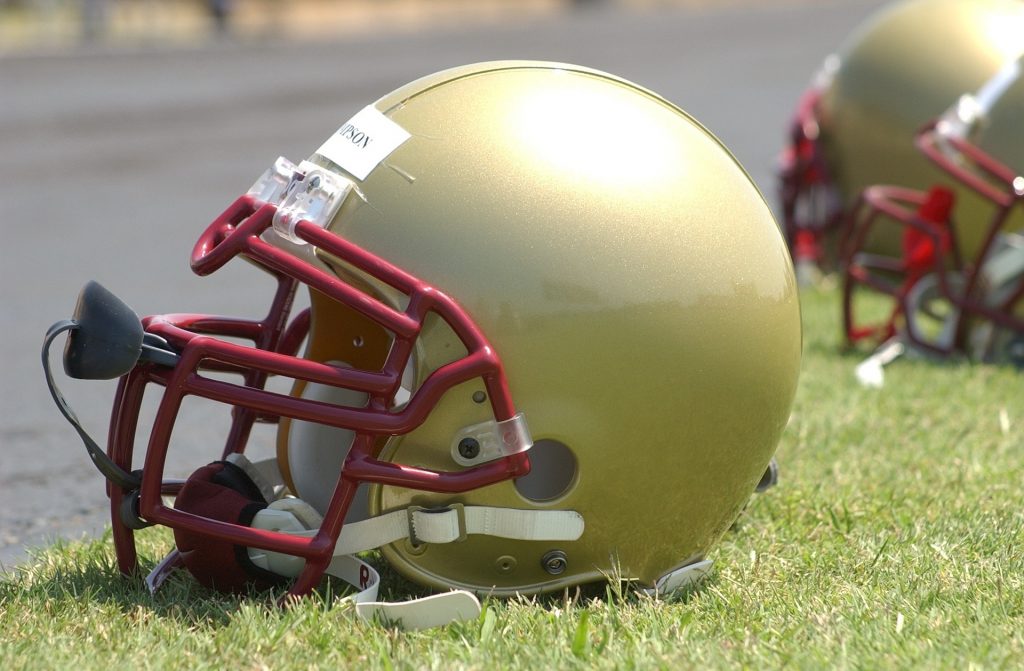By Will Burgess ‘22

For as long as most sports fans can remember, you did not see anyone playing in an NFL game without a helmet. It is used to protect the head from concussions and other neck injuries, and with the advancements of technology, the NFL found and continues to make safer helmets. Drawbacks with these new helmets, according to the players, are comfort and function, prohibiting the way some players play the game, but ultimately they help to keep everyone safe.
Most recently, former Raider and Patriot, Antonio Brown, complained about the newer models he was given to test out. He claimed that the newer line of helmets made it hard for him to see and they were not comfortable to play in either.
Though he may have blown the conflict about his helmet out of proportion, he was not the only player in the league to comment on the newer line of helmets. Past champion and MVP Quarterback, Tom Brady also was hesitant to make the change.
“You get used to the same helmet for a long period of time,” Brady, starting his 20th season as the New England Patriots’ quarterback, said in an interview with CNN. “My last helmet—I wore it the last four Super Bowls, so it was a pretty great helmet for me. I hated to put it on the shelf. It’s kind of what I’m dealing with.”
Despite the complaints about the adjustments, these helmets have been proven to be safer for the NFL player. According to USA Today, the total of documented concussions by the NFL dropped by 23.8 percent during the 2018 season (including the pre-season). This is the lowest number since the 2014 NFL season.
Knowing this, what makes the new models so much safer?
The modern helmets typically use Thermoplastic Urethane Cushioning, or TPU while the older helmets used traditional padding. Claimed by the Denver Post, “TPU performs more consistently through all the conditions a player finds himself in over the course of a season.” It is also proven to absorb impacts and a variety of different temperatures, making the padding very dependable wherever the game might occur.
Unlike the leather helmets of the past, the headwear now has different layers to protect the players.
Looking at the VICIS system, “The helmet is designed with a series of plates that work in concert to reduce the trauma behind impact,” as explained in a CBS sports article by Kevin Skiver. These plates include the Lode Shell, the VICIS RFLX, the Arch Shell, and the Form Liner. All of those layers work with one another to protect the skull inside.
According to Canal Street Chronicles, more players are making the switch before the official ban of old helmets goes through. Last year 32 players were documented wearing banned models despite the risk of injury.
It is reassuring to see the NFL take action into protecting the league’s players on the field. As time goes by, and technology progresses, this most likely will not be the last update to the standard helmets used in-game, regardless of how the players feel about the change.
